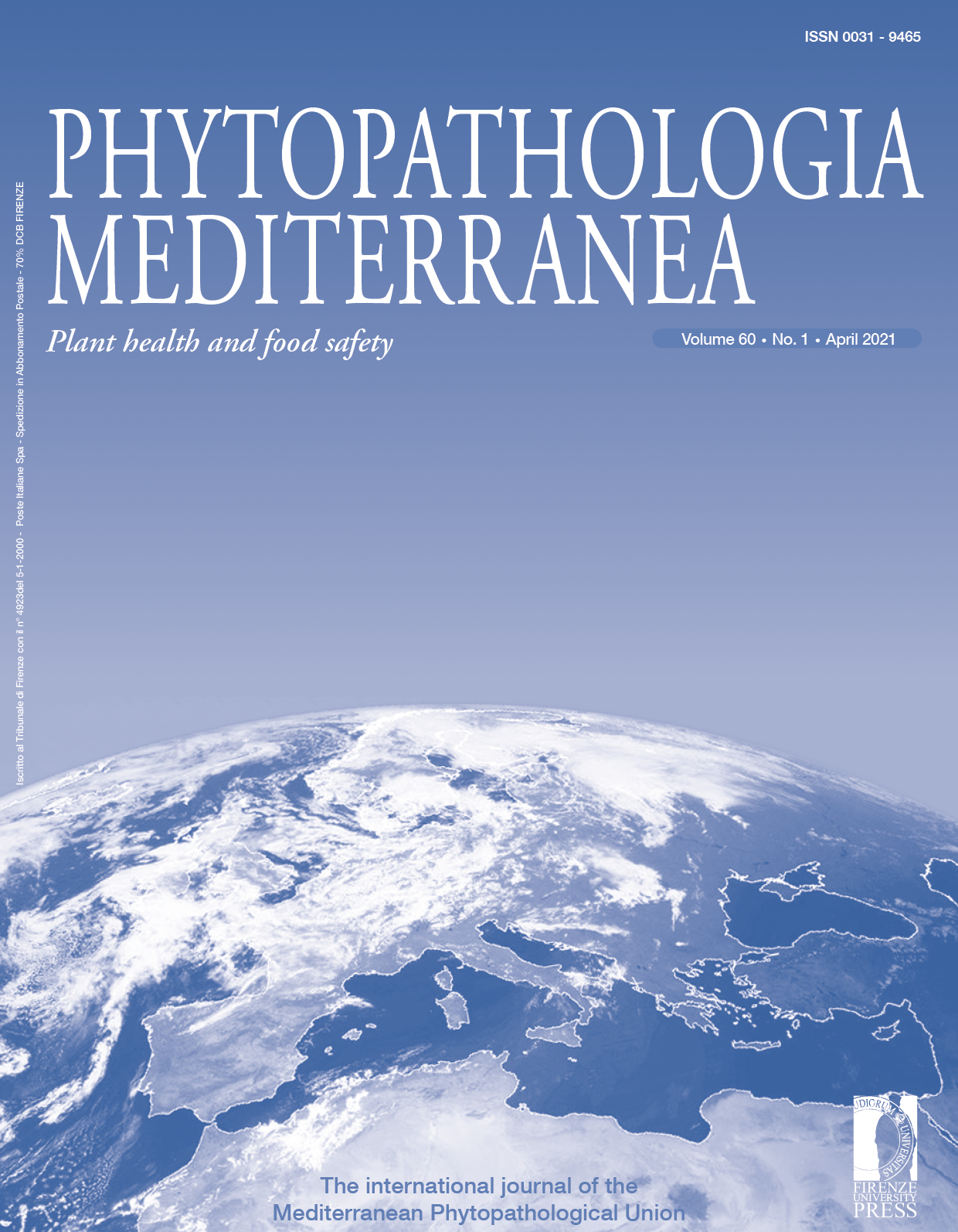Published 2021-05-13
Keywords
- Citrus decline,
- morphology,
- multigene phylogeny,
- systematics
How to Cite
Abstract
Citrus is one of the most important fruit crops cultivated in South Africa. Internationally, citrus dry root rot is a common disease in major citrus production areas. Several abiotic and biotic factors are involved in disease development, in which Neocosmospora species are important biotic agents. The diversity of Neocosmospora species associated with dry root rot symptoms of Citrus trees cultivated in South Africa was evaluated using morphological and molecular analyses. Multi-locus analysis was conducted, based on fragments of seven loci including: ATP citrate lyase (acl1), calmodulin (cal), internal transcribed spacer region of the rRNA (ITS), large subunit of the rRNA (LSU), RNA polymerase largest subunit (rpb1), RNA polymerase second largest subunit (rpb2), and translation elongation factor 1-alpha (tef1). A total of 62 strains representing 11 Neocosmospora species were isolated from crowns, trunks and roots of citrus trees affected by dry root rot, as well as from soils sampled in affected citrus orchards. The most commonly isolated taxa were N. citricola, N. ferruginea and N. solani, while rarely encountered taxa included N. brevis, N. crassa, N. hypothenemi and N. noneumartii. Furthermore, four Neocosmospora species are also newly described, namely N. addoensis, N. citricola, N. gamtoosensis and N. lerouxii.







